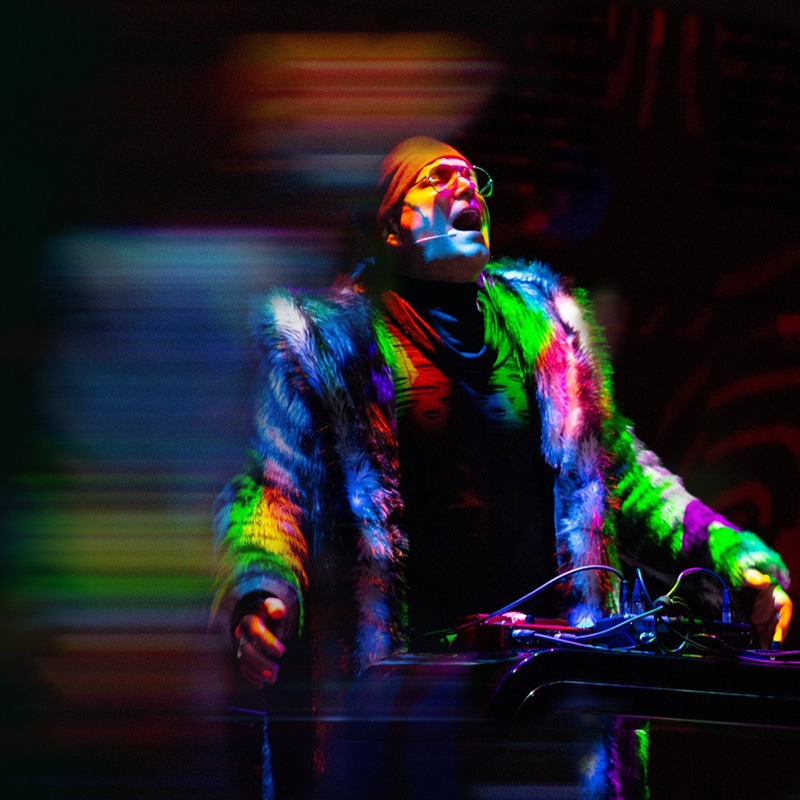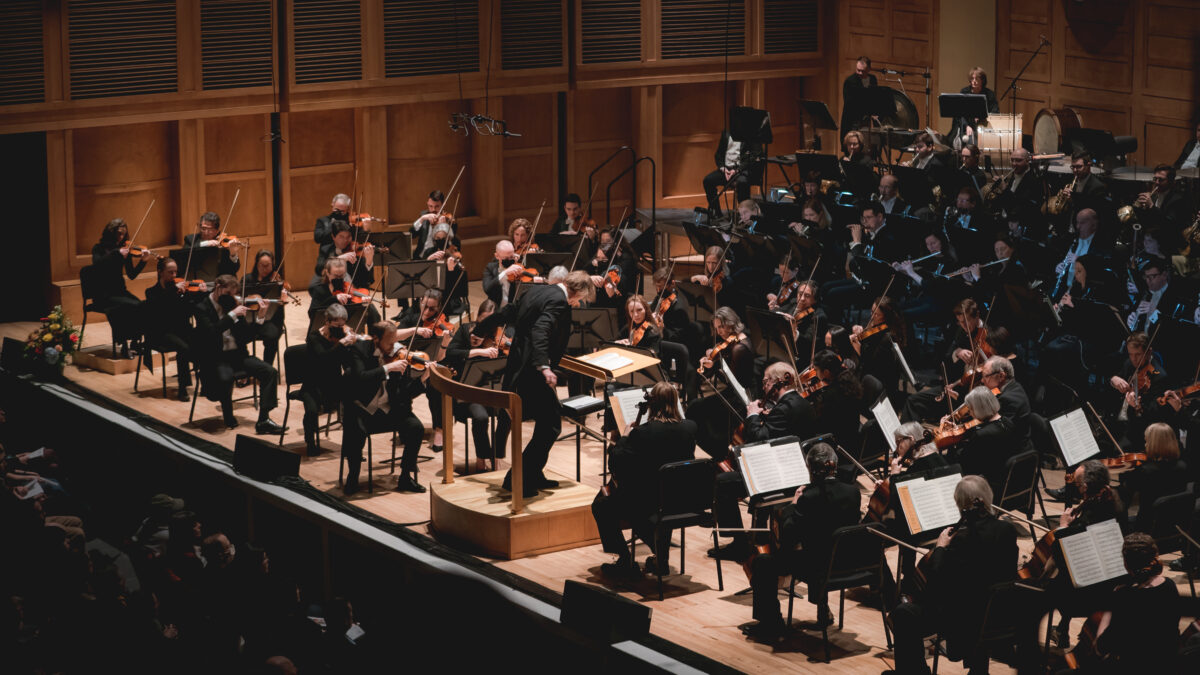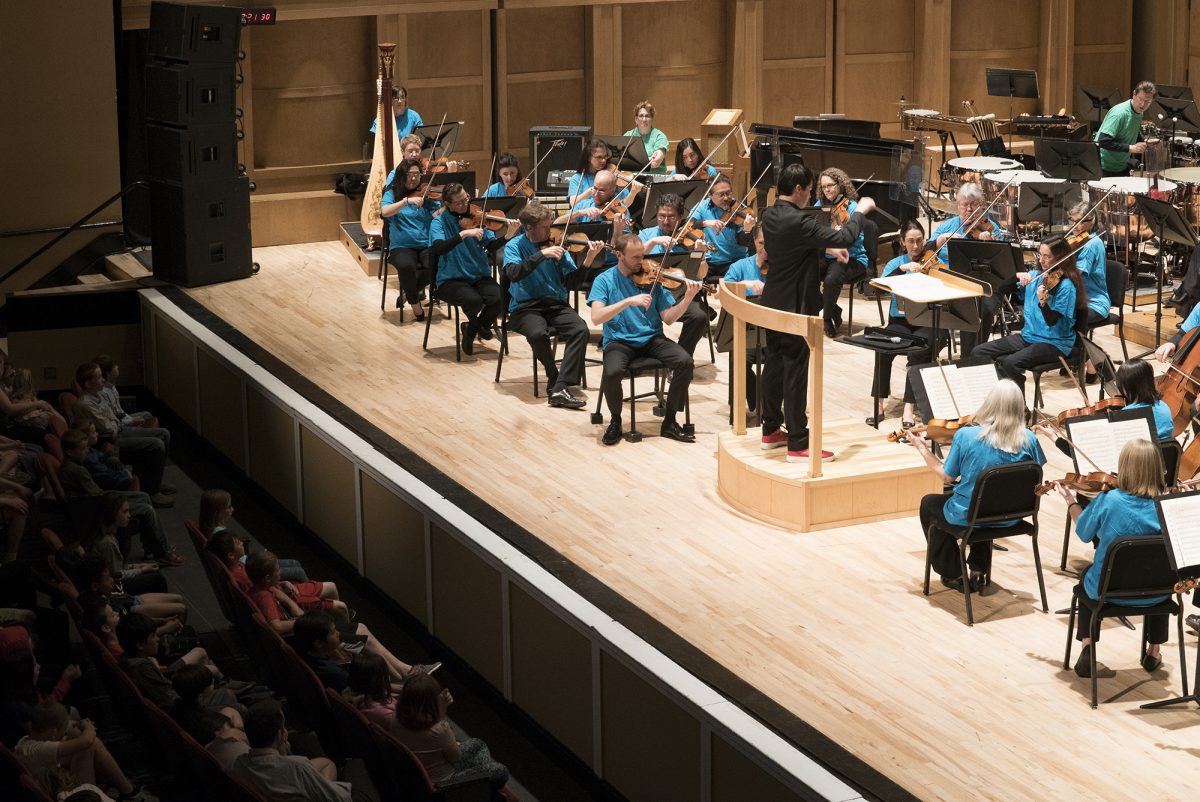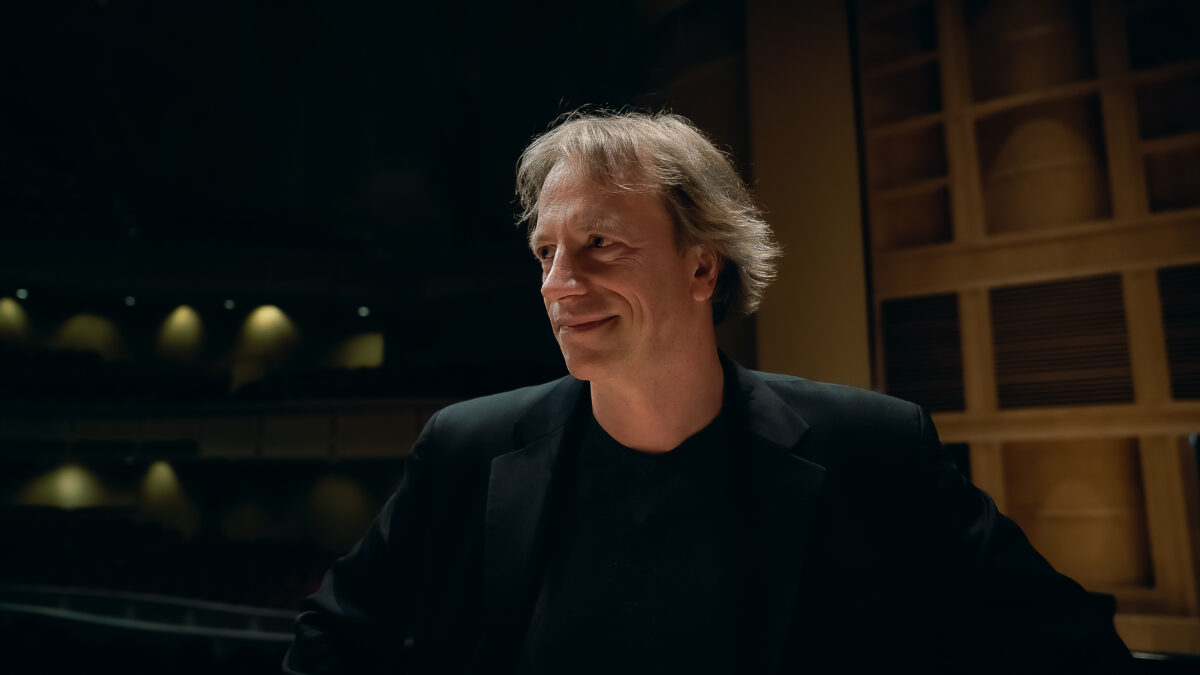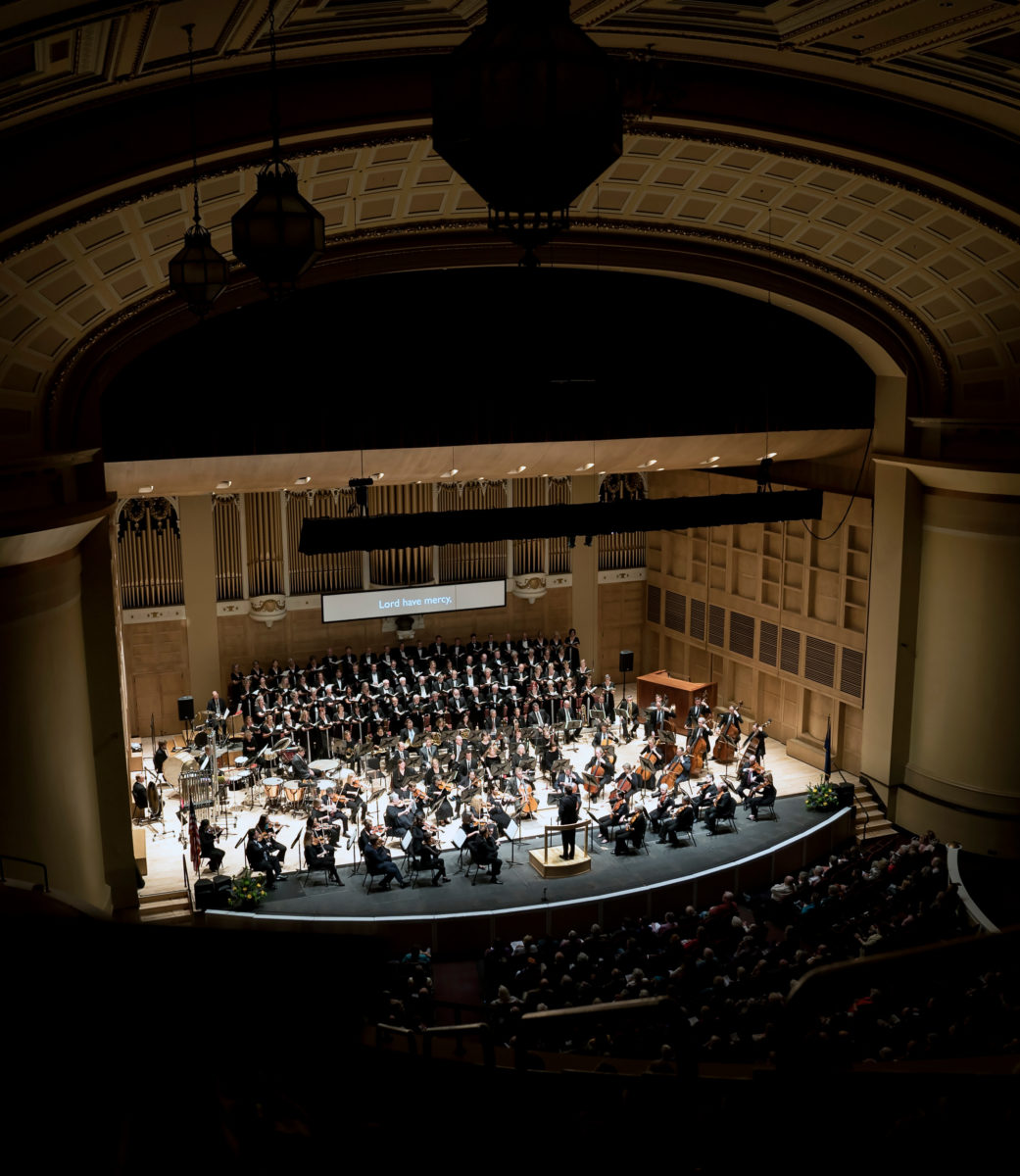Yo-Yo Ma with the PSO Program Notes
Sydney Guillaume
Lavil Okap
Sydney Guillaume was born in Port-Au-Prince, Haiti on July 22, 1982. He now lives in California. Lavil Okap was first heard on April 1, 2023 in Cap-Haïtien, Haiti with the musicians of the Haitian Orchestra Institute under the composer’s direction. It is scored for 2 flutes and piccolo, 2 oboes, 2 clarinets and bass clarinet, 2 bassoons, 4 horns, 3 trumpets, 2 trombones, tuba, percussion and strings (first and second violins, violas, cellos and basses). It lasts about 12 minutes in performance.
*****
I grew up in Port-au-Prince, Haiti’s capital, but every year, I would make the trip up north with my family to a town called Plaine-du-Nord, my father’s hometown. Plaine-du-Nord is less than 10 miles from Cap-Haïtien, where my mother spent her youth, and where my grandparents lived for almost 10 years.
Composing my first orchestral work to celebrate Cap-Haïtien’s 350 years was a great honor for me. The city is steeped in history – it was Haiti’s first capital during its early years of independence, and it played a critical part in the Haitian Revolution.
The first movement of Lavil Okap, was inspired by the journey of King Henri Christophe and the Haitian Revolution. It includes a Yanvalou rhythm. Yanvalou has roots in the slavely era of Haiti. That traditional rhythm emerged among the African slaves who brought their cultural traditions and spiritual practices to the island. Henri Christophe is a key figure in Haitian history, he rose from slavery to become not only Haiti’s president but also its self-proclaimed King Henry I. His remarkable journey and legacy symbolize the resilience of the Haitian people. Lavil Okap was also written in 2020 to commemorate 200 years since the death of Henri Christophe.
In the second movement, I aimed to capture a jubilant atmosphere – what Cap-Haïtien must have been like in its hay days after gaining the independence. However, as the movement unfolds, it transitions to a somber tone, symbolizing the ongoing struggles Haiti has faced since becoming the world’s first free black republic.
The third movement was inspired by the Haitian people’s resilience, with a repeated melody representing their unwavering determination. It starts with the trombones mimicking Haitian bamboo instruments playing Rara music. Rara originated as a form of expression for enslaved Africans during the Haitian Revolution and has become a very popular form of festival music used for street processions throughout Haiti and among Haitian communities abroad.
The work concludes with a joyful Rara celebration, symbolizing hope and optimism for a brighter future in Haiti.
-Sydney Guillaume
********
Ottorino Respighi
The Pines of Rome
Ottorino Respighi was born in Bologna, Italy in 1879 and died in Rome in 1936. He composed The Pines of Rome in 1924, and Bernardino Molinari conducted the first performance in Rome the same year. The work is scored for large orchestra: 3 flutes, piccolo, 3 oboes, English horn, 3 clarinets, bass clarinet, 3 bassoons, contrabassoon, 4 horns, 3 trumpets, 3 trombones, tuba, timpani, percussion, 2 harps, celeste, piano, organ, and strings. Respighi also calls for 6 buccine (ancient Roman war trumpets); these parts are normally played on modern brasses.
*****
Respighi is sometimes derided for composing music that broke no new ground, addressed no burning social or philosophical issues, and being, of all things, relentlessly pleasant. Concert-goers have had a different opinion, and works such as The Pines of Rome remain in the orchestral repertory not because they are pleasant, but because they are good.
Respighi first studied viola and composition at the Liceo Musicale in his native Bologna. On two extensive visits to Russia he learned composition and orchestration from Rimsky-Korsakov, then studied with Max Bruch in Berlin. He ultimately settled in Rome, where he was first a professor and then Director of the Conservatorio di Santa Cecilia. He loved the city but hated his administrative duties, and in 1926 he resigned his post to free his time for composition.
Respighi was unashamed of his musical conservatism. He called the prevailing trends in music in the early twentieth century “the biblical confusion of Babel” and essentially ignored them, composing in the same late-romantic style that had been handed down to him. He composed works in nearly all genres, including operas, ballets, concertos, chamber music, choral and vocal works, as well as works for orchestra. His music remains his personal manifesto: it is unabashedly accessible, descriptive and opulent.
The present work is part of Respighi’s so-called “Roman Trilogy” including The Fountains of Rome and Roman Festivals. While all three are concerned largely with the Rome of Respighi’s own experience—and great devotion—The Pines of Rome also looks back to the greatness of Classical Rome.
The four sections of The Pines of Rome are played without pause. According to Respighi, The Pines of the Villa Borghese depicts children at play, “dancing the Italian equivalent of ‘Ring Around the Rosy,’ playing at soldiers, marching and fighting. They twitter and chirp like swallows at evening.” The trumpet discord at the end was startling to audiences of 1924, but today we may hear it for what it is: the sound of a taunting child. In The Pines Near a Catacomb the trees surround the catacomb’s shadowy entrance. From within we hear a mysterious chant, reminiscent of the early Christians who worshipped in secret, and who are buried there. The Janiculum is one of the Seven Hills of Rome; The Pines of the Janiculum pictures the gardens there, “the warm night air filled with the song of a distant nightingale.” Respighi’s use of a phonograph record for the nightingale’s song was considered radical in his day. In The Pines of the Appian Way one can hear the “unending steps” of ancient Roman legions returning along their traditional route of victory. “Trumpets blare, and, in the grandeur of a newly risen sun, the army of the consul bursts forth toward the sacred way, mounting in triumph the Capitoline Hill.”
-Mark Rohr
********
Antonín Dvořák
Concerto for Cello and Orchestra in B minor, Op. 104
Antonín Dvořák was born in Mühlhausen, Bohemia in 1841 and died in Prague in 1904. He began this concerto in New York in 1894 and completed it in 1895 in Bohemia. The first performance was given in London in 1896, with Leo Stern the cellist and Dvořák conducting the London Philharmonic Society. The work is scored for solo cello, 2 flutes, piccolo, 2 oboes, 2 clarinets, 2 bassoons, 3 horns, 2 trumpets, 3 trombones, tuba, timpani, triangle, and strings.
*****
Dvořák’s enthusiasm for the new world can be found in the first works he composed in America. He had come to assume the directorship of the National Conservatory in New York, and he took the opportunity to immerse himself in the indigenous music, especially Native American music and Negro spirituals. These he enjoyed so well he permitted himself to emulate them in various works such as his Ninth Symphony. But by the time he wrote the Cello Concerto, the last work he composed here, Dvořák was deeply homesick. By now the Americanisms had subsided and the music was once again thoroughly Bohemian.
Adding to Dvořák’s melancholia was the news that a former student of his, Josefina Čermák, had become terminally ill. (Dvořák had fallen deeply in love with Josefina, but she hadn’t reciprocated.) In tribute to her he incorporated one of her favorite songs into the second movement of this concerto.
The first movement gives notice that this will be no ordinary concerto. The dark, brooding theme that opens the work will return again in the Finale; here it launches a passionate movement of symphonic depth. The second theme is one of the many gems in this work, a great and noble tune introduced by the horn and taken up later by the solo cello.
The tender wind chorale that begins the second movement gives no hint of the intense drama about to unfold: concertos are rarely so powerful, so achingly beautiful, so magical as this.
When Dvořák returned to Prague he asked his friend, the renowned Czech cellist Hans Wihan, for advice on cello technique. He got rather more advice than he wished. Dvořák allowed Wihan to edit the cello part, but Wihan wanted to make major changes, including the insertion of a huge cadenza at that most sublime moment of quietude near the end of the Finale. Wihan was so insistent that Dvořák felt compelled to write his publisher, instructing him to ignore any letters from Wihan: “It is impossible to insert a cadenza. The Finale closes gradually, diminuendo—like a sigh—with reminiscences of the first and second movements; the solo part dies away to a pianissimo, then there is a crescendo, and the last measures are taken up by the orchestra, ending stormily. That was my idea, and from it I cannot retreat.” Dvořák’s cyclical use of previous materials has a special poignance here. When he returned to Prague he learned that his beloved Josefina had died, whereupon he changed this hushed reminiscence to include her favorite song, too. It is a passage of ravishing beauty and profound sadness.
There are relatively few Romantic cello concertos, due to the ticklish nature of balancing a large orchestra against a softer-voiced, tenor-range instrument. Dvořák solves the problem by reducing the scoring to chamber music proportions while the cello is playing. He isn’t shy about using the full force of the orchestra, however, and the deft combination of delicacy and power helps give the work its symphonic scope. Dvořák’s friend and mentor Johannes Brahms was so impressed he remarked, “Why on earth didn’t I know that a person could write a violoncello concerto like this? If I had only known, I would have written one long ago.”
-Mark Rohr





